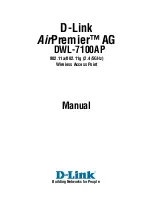
94
➊
●
PPTP
— Point-to-point Tunneling Protocol. A method for implementing virtual private networks that
does not provide confidentiality or encryption but relies on the tunneling process for security.
➊
●
PRL
— Preferred Roaming List. A list that your wireless phone or device uses to determine which
networks to connect with when you are roaming. (Network operator specific)
➊
●
Protocol
— A standard that enables connection, communication, and data transfer between
computing endpoints.
➊
●
Proxy
— A firewall mechanism that replaces the IP address of a host on the internal (protected)
network with its own IP address for all traffic passing through it.
➊
●
Rev A
— CDMA EV-DO Rev. A is a leading-edge wireless technology with higher data rates and higher
system capacity. It is a fully backward compatible standard and remains interoperable with deployed
EV-DO networks and devices around the world. The increased data rates on Rev. A’s physical layer
enable richer applications and services. For more information, visit
www.cdg.org
.
➊
●
RFB
— Remote Frame Buffer. A protocol for remote access to graphical user interfaces.
➊
●
Router
— A device that directs traffic from one network to another.
➊
●
RTP
— Real-time Transport Protocol. A packet format for streaming multimedia over the Internet.
➊
●
SIM
— Subscriber Identification Module. Found in GSM network technology, the SIM is a card
containing identification information for the subscriber and their account. The SIM card can be moved
to different devices.
➊
●
SMS
— Short Message Service. A service for sending short messages of up to 160 (224 in 5-bit mode)
characters to mobile devices. SMS is also known as text messaging.
➊
●
SMTP
— Simple Mail Transfer Protocol. An Internet standard for email transmission across IP networks.
➊
●
SSID
— Service Set Identifier. The name assigned to a WiFi network.
➊
●
TCP
— Transmission Control Protocol. A core protocol for transmitting and receiving information over
the Internet.
➊
●
TCP/IP
— Transmission Control Protocol/Internet Protocol. A communications protocol developed
under contract from the U.S. Department of Defense to internetwork dissimilar systems.
➊
●
Telnet
— Telecommunication Network. A network protocol used on the Internet or on local area
networks.
➊
●
TFTP
— Trivial File Transfer Protocol. A file transfer protocol with a subset of FTP functionality.
➊
●
UA
— User Agent. Any device or software used to access a web page. A user agent might be a web
browser, a smart phone, or a screen reader.
➊
●
UDP
— User Datagram Protocol. A simple transport protocol used to transfer information on the
Internet.
➊
●
UI
— User Interface. The part of a software application or hardware device that a user sees and
interacts with.
➊
●
UMTS
— Universal Mobile Telecommunications Service. A GSM-based, third-generation broadband,
packet-based transmission of text, digitized voice, video and multimedia at data rates up to 2
Mbps. UMTS offers a consistent set of services to mobile users all over the world. Until UMTS is fully
implemented, users can use multi-mode devices that switch to currently available technology.


































